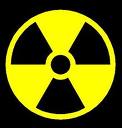Over 20 Radioactive Hotspots Found in Tokyo … Despite Government and Media Attempt to Cover Up Spread of Radiation

More than 20 Radioactive Hotspots Found in Tokyo … All Due to Citizen Measurements
I noted last week that Tokyo and the adjoining city of Yokohama were found to contain “hotspots” with very high levels of radiation, and that all of the hotspots were originally found by citizens using geiger counters, because the government wasn’t really testing.
On the same day I posted, the New York Times reported:
The patch of ground was one of more than 20 spots in and around the nation’s capital that the citizens’ group, and the respected nuclear research center they worked with, found were contaminated with potentially harmful levels of radioactive cesium.
***
Reports that substantial amounts of cesium had accumulated as far away as Tokyo have raised new concerns about how far the contamination had spread, possibly settling in areas where the government has not even considered looking.
The government’s failure to act quickly, a growing chorus of scientists say, may be exposing many more people than originally believed to potentially harmful radiation. It is also part of a pattern: Japan’s leaders have continually insisted that the fallout from Fukushima will not spread far, or pose a health threat to residents, or contaminate the food chain. And officials have repeatedly been proved wrong by independent experts and citizens’ groups that conduct testing on their own.
“Radioactive substances are entering people’s bodies from the air, from the food. It’s everywhere,” said Kiyoshi Toda, a radiation expert at Nagasaki University’s faculty of environmental studies and a medical doctor. “But the government doesn’t even try to inform the public how much radiation they’re exposed to.”
***
Japanese nuclear experts and activists have begun agitating for more comprehensive testing in Tokyo and elsewhere, and a cleanup if necessary. Robert Alvarez, a nuclear expert and a former special assistant to the United States secretary of energy, echoed those calls, saying the citizens’ groups’ measurements “raise major and unprecedented concerns about the aftermath of the Fukushima nuclear disaster.”
***
Of the 132 areas tested, 22 were above 37,000 becquerels per square meter, the level at which zones were considered contaminated at Chernobyl. [One of the readings is much higher even than those commonly found in the Chernobyl exclusion zone, confirming reports from Dr. Christopher Busby from August.]
***
Japan’s relatively tame mainstream media, which is more likely to report on government pronouncements than grass-roots movements, mainly ignored the citizens’ group’s findings.
Indeed, as Voice of America noted yesterday:
While the news about [high levels of radiation found at one Tokyo] ballpark complex had been reported overseas, including on the front page of Saturday’s New York Times, it had yet to be mentioned in Japan’s mainstream media.
Nikkei is reporting today that a primary school in Tokyo has been measured at 4 microsieverts per hour.
Reuters notes that even in cities relatively far from Fukushima, radiation will be a problem for decades to come:
“I doubt the problem will go away in a year or two. It takes 30 years for caesium 137 to decay by half. Each time it rains, caesium deposited in mountains will be washed down to where people live,” Kobe University professor Tomoya Yamauchi said.
In related news, a leaked Tepco document allegedly shows that 120 billion Becquerels of plutonium and 7.6 trillion Becquerels of neptunium were released into the air in the first 100 hours after the earthquake, and yet the media concealed the risk to public.
New thermal images released by Tepco appear to confirm that the radioactive cores are not within the containment vessels.
And NHK and Tepco have allegedly confirmed that steam was escaping from underground back in June, something Fukushima workers have alleged for some time.

